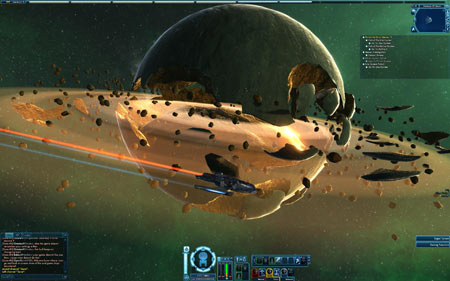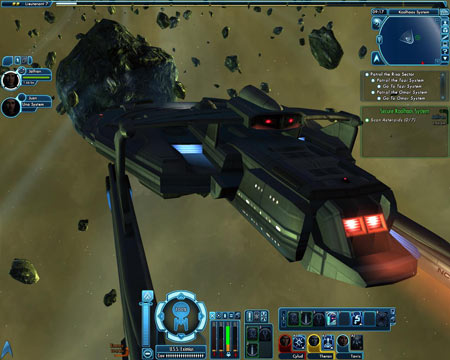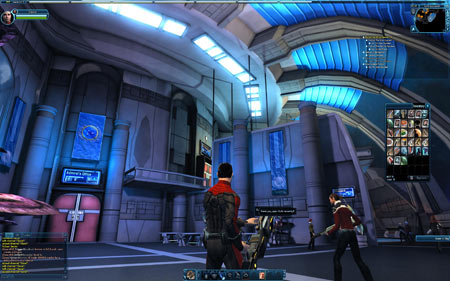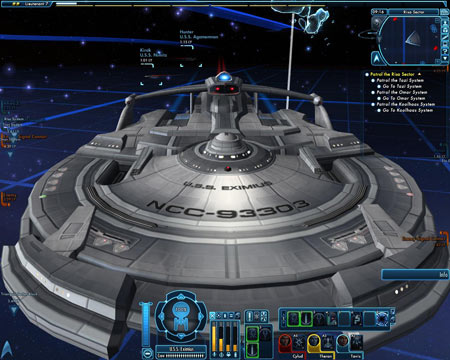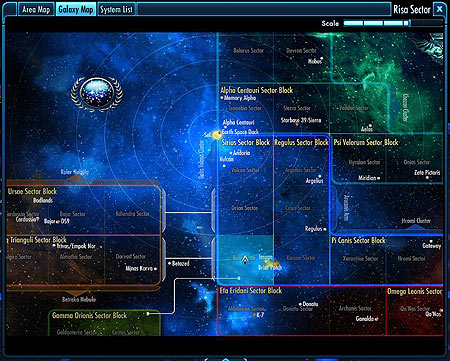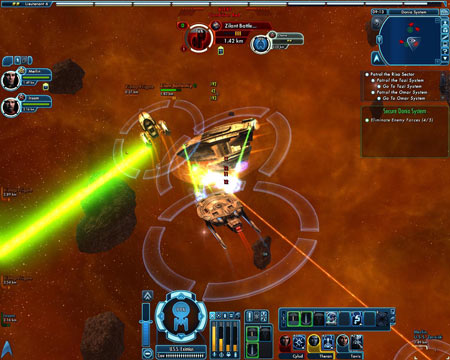Star Trek Online: Game Performance Analyzed And Benchmarked
Conclusion
Traditionally, MMOs have scaled well to even the slowest PC platforms. They have to, since this type of game depends on subscribers. If you want to pay employees to generate new content for the game, you need a large subscription base. And to accommodate a large user base, you need low system requirements. This is why the art directors at Blizzard were smart enough to create World of Warcraft with a larger-than-life cartoon-like style that just happens to be incredibly easy to render on slower and older PCs.
The Star Trek IP doesn't translate well into an easy-to-render art style, so the developers at Cryptic had to do the best they could with a look that has been cemented by over 40 years of television shows and movies. They made it work with a graphics engine that can scale down low enough to accommodate any machine, but if you have the hardware to push the fidelity, things can look very nice. Specifically, the space arenas have the potential to look absolutely gorgeous. The ground areas can look great, too, but they aren't as breathtaking.
So, just exactly how much hardware does a person need to run Star Trek Online? With an ultra-budget Athlon II X2 250 paired with integrated 785G graphics, we were able to run the game smoothly at 1280x1024 at the maximum detail level, as long as we selected the Half Resolution option in the detail settings. Yes, the half resolution setting makes things a lot less attractive, but it works. If nobody's PC gets left behind, the MMO is viable.
However, if you want to push STO's fidelity to maximum at full resolution, you're going to need some decent graphics hardware. At 1280x1024, you'll want a GeForce 9600 GT, at minimum. For 1680x1050, a Radeon HD 4850 will do the trick. At 1920x1200, a GeForce GTS 250, GTX 260, Radeon HD 4890, Radeon HD 5750, or better should be on your shopping list. At 2560x1600, consider lowering the detail a bit, because none of the cards we've tested here could hit a solid 30 FPS at maximum settings.
Remember, too, that the low performance we benchmarked occurred in space arenas with dense asteroid fields at the end of the open beta. We don't expect the public release to be all that different, considering that the full game opens to pre-order buyers only three days after the open beta closes. However, Cryptic might decide to put some development resources into optimizing these areas. If that happens, the situation will improve, as other space and ground areas are a lot easier on the graphics subsystem.
As things stand, STO requires a formidable graphics subsystem in order to enjoy the highest detail settings in all areas of the game. At the same time, visual details can be scaled down to accommodate smooth performance on even low-performance PCs. If you're curious about whether or not the game is worth upgrading for, finding out by spending $15 on a month's worth of play time isn't an unreasonable price to pay. The game went live on February 2, 2010 in North America and three days after that in Europe.
Get Tom's Hardware's best news and in-depth reviews, straight to your inbox.
Don Woligroski was a former senior hardware editor for Tom's Hardware. He has covered a wide range of PC hardware topics, including CPUs, GPUs, system building, and emerging technologies.
-
Silmarunya jdh64Admit it TOMS......Geforce rules this games as well as others.......quit being ATI fanbois......Wait till the new series of cards comes out....then whatcha gunna do...cry!!!!Reply
Not really. This is just about the only benchmark where a Geforce card beats a comparable 5000-series one, so there's still a nice lead for the 5000 cards. With a driver update, this result can change in favor of the 5000, which would give them back every game tested here...
And nobody should be very concerned about the GTX 300, at least not for the first year and a half. The initial mammoth chip will be expensive, hot, noisy and more powerful than useful for gaming. By the time it scaled down properly, ATI will have refreshed cards in the market for a while, probably offering better performance, lower power consumption and more features for a similar price tag.
-
gilbertfh This game looks interesting and could be a good diversion once in a while but I can't really see it replacing the games I am playing now. I have played other cryptic studios games and they really didn't engage me for long. If I buy it I will at least play it for the included month before purchasing a subscription.Reply -
toxxel If your interested in playing this game give it 6 months or so. Currently there is no content at max level, and it takes less than a week to hit max rank. Klingons only have pvp content but more is promised for both factions. Server instability and downtime have plagued launch mostly for the overwhelming player base and not being prepared.Reply
I for one would wonder how this and Champions Online run since ST:O runs on a modified CO engine. -
footsoldier Sh*t game. Sh*t graphics. But, good article. Geforce do weirdly beats 5000s tho, maybe some driver updates will fix it.Reply -
notty22 Star Trek and Nvidia ROCK, thats not news to people in the Know. I feel sorry for ati***s scared of Fermi.:)Reply -
jennyh I guess Nvidia leaned on Don after this months "Best gaming graphics card".Reply
Batman AA was the last one of these reviews I believe. Either way, twice in the past 4 months you've managed to review games that go quite wildly against the norm in terms of the gtx260's actual potency. -
cypeq notty22I feel sorry for ati***s scared of Fermi.Reply
I feel sorry for nVidia now becouse roles on marked turned and now nVidia is on position where it needs to chatch up.
